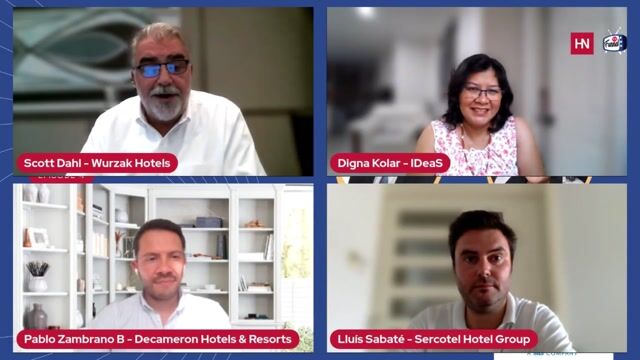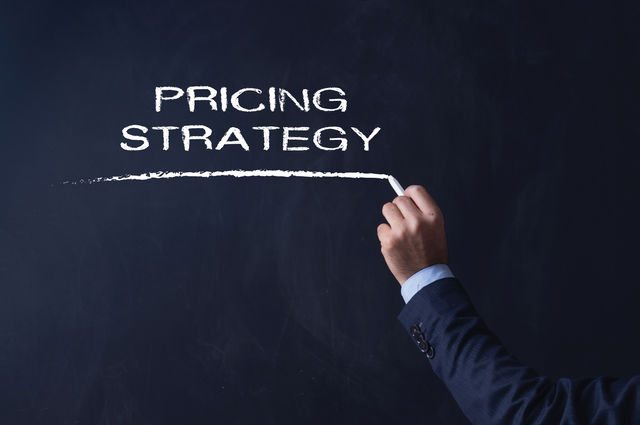How to build your pricing strategy in today's reality?
16 experts shared their view
Though there has been continual evolution over the last two decades in the way hoteliers monetize the power of data to make pricing and strategy decisions, one constant remained: The dependence on historical data. Then along came COVID-19 and its impact on travel created historical comparisons that were so distorted that they were meaningless in the old decision-making process.
But the worst is behind us, travel is returning and many markets are already performing at or above their 2019 pre-pandemic level. A lot has happened. Revenue Managers who survived the last two years, mostly by trial and error, have emerged much stronger. Top revenue management system providers have adjusted their algorithms. The traditional year-over-year comparison has been replaced by more flexible models, including the widespread use of 2019 as a baseline for performance. And much more.
So now that the smoke has cleared and most agree a "new normal" is here, what are the key tools and processes that should be standard in every hotelier's post-pandemic revenue optimization toolbox?

This World Panel Viewpoint is sponsored by IDeaS a SAS company
More information
We need to start by having the right strategy and direction of where you want to go and include tactics about these three key components:
- Business Mix - We have all seen an increase in leisure segment demand, followed by groups, and we are slowly seeing the corporate segment return. Demand from each segment is still shifting, so you will want to regularly re-evaluate the optimal business mix for your property and set the right tactics to achieve your targets and get your fair market share.
- Pricing – Not only do you have to adjust your prices based on inflation, competition, and the price elasticity of each market segment, but you should also look at the business mix strategy. A good business mix at the right price will lead you to achieve the desired revenue and profit targets.
- Communication and collaboration – The days when each revenue stream in the hotel worked in silos, each looking at its own data, forecast, pricing, and distribution, are long gone. Communicate your strategy clearly, so all departments focus on targeting and driving revenues cohesively.
In terms of tools, the agile and robust revenue management technology available today allows you to better manage and implement your strategy and provides you with the insight needed to change your strategy as circumstances evolve, one single source of truth.
The process should focus on fine-tuning your strategy; customers' behavior, needs, and demand is, and will continue to, change and disrupt the hospitality industry with new competitors and alternative accommodation options. Staying on top of your strategies and breaking down silos in your organization is essential to positively impact your bottom line.
What is true post-pandemic, was true pre-pandemic, although now the need may be more acute. To be effective and efficient in today's complex, digital environment, revenue managers must have and actually USE a revenue management system to manage routine day-to-day pricing decisions. This means spending the time to work with the system to understand how it thinks, not just overriding when the RM doesn't agree. Once the system is up and running, revenue managers will then have the time to build strategies, working in close collaboration with their counterparts, and to do exception management, focusing on periods that require human expertise layered onto system insights. The RMS doesn't (and shouldn't) ingest and display every data source that provides insight into a market-winning strategy, so the organization also needs dynamic visualization tools to analyze and report insights. Static, spreadsheet-driven reporting does not tell the story in a compelling enough fashion to rally the organization around a strategy. Visualizations, rich in insights, but simple in presentation support the kind of story telling needed to help stakeholders understand and get behind recommendations.
The pandemic made it obvious (and painful) to hoteliers that in any situation that poses uncertainty, it is crucial to quickly develop and deploy strategies to adapt to both short- and long-term shifts in demand. But here's the thing. Travel demand has always been uncertain, and history never repeats itself. Recent events just highlighted this fact for all of us and pushed the industry towards more innovations in the areas of forecasting and optimization.
While the traditional (constrained/unconstrained) forecasting approach that was based on internal historical reservation data served us well for a few decades, it's time to let it go and build a new one because it is no longer relevant. Because proper forecasting is the foundation of revenue and profit optimization, the discipline (and the industry overall) can't continue evolving optimally until we realize that we need a new way to forecast that reflects our new reality.
Essentially, what revenue managers are doing today (and what we're still teaching the new generation) is using historical internal occupancy data to predict the number of expected booked rooms. Let's be honest with ourselves: with this approach, we're not predicting demand, we're predicting occupancy.
In addition, we are absolutely ignoring the hotel's pricing strategy, and this is a big problem. The price set by the hotel fully controls the resulting occupancy levels. This is a basic principle that we're currently not taking into account for some reason. Forecasting occupancy irrespective of pricing is irrelevant in today's world.
In our current reality, when prices change every day (and in many cases, every hour) occupancy no longer correlates with market demand because it's affected by our pricing strategy.
So how do we build an optimal revenue management and profit optimization strategy using measurements of true market potential?
- First of all: demand measurement and demand forecasting need to take into account price expectations and price elasticity. So we need to move from measuring "my hotel's booking volumes" to "all hotels' booking volumes and customers' price expectations".
- Second: true market Demand measurements are only possible when external forward-looking market data is available.
And last but not least: we need to understand what we're optimizing. Is it RevPAR or is it Profit? If the latter - we need to rebuild our RMS algorithms. All of them.
Simply put, data is king, but with the right lens, pace data is front and center again. The most important thing to remember in our “new normal” is data relativity. While year-over-year comparisons can still be slightly relevant in terms of recovery, shorter-term pace data can be the most revealing predictors of future-looking performance. Think quarter over quarter, month over month, and week over week. Analyzing pickup trends is key and ever evolving. How quickly can we move on a trend we are seeing based on pickup?
Rethink your comp set and redo your SWOT analysis. Much has changed in 2+ years, and the pricing landscape has changed. We have had closed hotels, new openings, and properties who might have depended on business that no longer exists or are not producing as they used to. So, look for who is your new competitive set and adjust accordingly.
Lastly, do not be afraid to test small and learn big. Segmentation and channel distribution have also changed. Adjust your price positioning for one week at a time in the future and see how your pace and pickup react. If you fail, you fail small and learn big. We must not panic-drop rates to continue on the path of ADR recovery. Trusting in our strategies and pick-up trends is the most important thing we can do for long term success.
Historical data has become completely obsolete because of the pandemic and the current inflation. If your King Room went for $200 on September 20th of 2019 at 75% occupancy, how much should you charge in 2022 at 60% occupancy, citywides down by 70%; corporate groups down by 40%; corporate transients down 35% and Inflation at 8.5%? This is becoming an impossible task for humans to compute.
A typical hotel must make tens of thousands even hundreds of thousands pricing decisions a year and it has become virtually impossible for humans to stay on top of the complexities of revenue management, a trend that existed even before the pandemic.
So what is the solution? Human-less day-to-day revenue management is the only way going forward.
A human-less, AI-powered revenue management system (RMS) can make thousands and thousands of smart and precise pricing decisions a day and implement them automatically by making sense IN REAL TIME of dozens and dozens "live" data feeds: future demand data, comp set and market-wide BI, competitor rate shopping (hotel comp set and short-term rental comp set), property's sentiment index derived from thousands of customer reviews about the property and the comp set, booking pace, website booking denials and user browsing behavior, corporate group and negotiated business on the books, repeat business projections from the CRM platform, non-room revenue opportunities, and yes, historical data.
Only an AI-powered RMS can provide the pricing suggestions for upsells and upgrades for the new advance room selection capabilities, already taking the industry by storm. These applications allow your guests to select an available room from a digital floor plan of the property during the mobile check-in process 24-48 hours prior to arrival. Travel consumers are already accustomed to choosing online airline seats, movie theater seats, opera seats, etc., why not hotel rooms? This capability has already started to generate significant additional revenue for Hilton Hotels and many other hotels. You want a room away from the elevator? It's $12 more. A room on a higher floor? $25 more. Upgrade to a suite for $50? I am convinced room selection will become the norm within the next few years. The new Oracle Hospitality Integration Hub already offers a similar partner application.
All of these RM complexities and the sheer number of pricing decisions that need to be made in a 24/7 fashion makes it obvious why humans are no longer capable of running and should not be involved in the day-to-day revenue management.
Why is the subject of human-provided services in hospitality so important?
There are three extremely important issues plaguing the industry today that need immediate resolution: a)never-ending labor shortages, b) unsustainable labor costs and c) inability to provide adequate services to the exceedingly tech-savvy and DIY (do-it-yourself) customers.
In the foreseeable future, I believe that full-service 3, 4, 5-star hotels will still need human revenue management strategists who can devise the property's pricing strategies, set the property-specific revenue management goals and parameters, serve as the RMS AI's trainer, identify and input citywide events and conventions and other times of accommodation constraints, and review periodically the RMS pricing decisions. All of this can be performed by an in-house RM manager or outsourced to a specialized RM consultancy.
The hospitality tech marketplace offers some great and reasonably priced RMS technologies for every hotel category and budget: IDEAS, Duetto, Infor RMS, Atomize, RoomPriceGenie, SHR Wave RMS, etc. Yet, less than 10% of independent hotels around the world have an RMS in place (Libra).
Why is that? It is not the cost - all RMS systems offer flexible PRPM (per room/per month) fees, now all of the RMS tech is cloud-based so there is no expensive hardware or IT personnel needed to maintain and install updates. In addition, especially for budget, economy, lower-midscale and small hotels, an automated RMS replaces the need for human revenue managers.
So why is it then? The fear of new technology, reluctance to learn new applications, lack of qualified staff to select the right RMS solution and coordinate the implementation, inertia ("We have always used an Excel spreadsheet"), and definitely lack of understanding about the revenue upside an RMS technology provides.
If I were an RMS vendor, I will NOT charge PRPM fees the first 12 months of engagement. I will charge 10%-15% from the upside: revenue above and beyond a negotiated benchmark, which could be anything: the STR projected RevPAR increase for the destination, room revenue above budget, and once travel normalizes, above the same period of the previous year.
Having acess to good RMS tech is key. It's not only that (as Scott mentions) the best RMS tools have changed their algorithms. More and more revenue tech is including machine learning and AI to their toolkit, which enables the software to learn on the go, and adjust the offered rates according to current demand.
And that is key: Not to focus that much on historical data, but focus on the current ever-changing scenario. Just because Sept 21 was good does not mean this year it will be similar. Not being able to maximize your rates according to the current pick up data (done on the spot and automated) will make a huge dent on the optimization of your rates and inventory.
Besides the RMS, a good whole ecosystem of tools must be present: Rate Shopper, meta-search optimization, etc... must be part of the package too.
From the pandemic, we have learned that we need to be agile and ready for change, and we accepted the fact that history will not necessarily repeat itself. We changed the point of view from the historical to the real-time data, debunked some myths linked to our regular but old-fashioned way to operate, and unlocked different ways to manage our pricing: focusing more on value and the customer target. Handling the unexpected has also made us braver in experimenting with new strategies and tactics to gain market share, and we became more creative strategic thinkers.
The revenue optimization toolbox of the post-pandemic revenue manager is not very different from the pre-pandemic one: technology always plays a fundamental role in managing demand volatility. But a good Revenue Management System is no longer enough, the post-pandemic revenue manager must learn to read and interpret demand by sourcing external data (big data) but also internal data sources which were traditionally not necessarily essential to set the revenue strategy such as digital, marketing, and finance insights.
In the post-pandemic era, what has really changed is the mindset and the importance of sharing knowledge, insights, and data within the team as we start from a new demand baseline. In the past, we worked a lot with historical assumptions to define the strategy for the construction of the Budget or future pricing; to date, the benchmark is based on the most recent data and the top performance year which for some hotels remains 2019, for others became 2022.
To build our pricing strategies we must factor in our decisions some fundamentals: demand trends, competitive benchmark (external, topline and profit) and inflation/rising costs. Leveraging the demand predictions from our revenue management systems and tools, helps us to set the correct pricing based on market demand fluctuations. But the ever-evolving demand trends require us to tap into travel intentions and therefore the digital data becomes essential to anticipate any travel shifts: being it data that we collect from a performing booking engine through travel searches and conversions, length of stays, booking windows, channels; digital information from google analytics, our website conversion and clicks; geo trends, flight searches, events, benchmarking tools such as STR benchmark and forward data. Being on top of demand and leveraging all sources is paramount to getting a real-time picture of our volatile new normal.
The increasing costs of distribution with OTAs ramping back up in 2022 and skyrocketing inflation + energy costs are heavily impacting the profit side. From a profit management standpoint, on one hand, our pricing strategy must still maintain the drive towards the most profitable channel with closer attention to the distribution costs and to build an optimal channel mix. On the other hand, we must cross our topline and financial data to work on financially sustainable results by optimizing the segment mix with a focus on total revenue management for the best revenue and profit return. A business intelligence tool can help us to break the data and analyze other KPIs rather than the traditional topline ones such as ProfitPAR, GOPPAR a TRevPAR - the shift from Pricing Strategy to Demand Strategy has indeed one simple goal: Profit Strategy that is the direction that the Revenue Management was always supposed to head to, post-pandemic it is finally the time.
As the hospitality industry looks to rebound from the COVID-19 pandemic, hoteliers are rethinking their pricing strategies. While some hotels are slashing rates to attract business, others are raising prices trying to take advantage of the "Ketchup effect".
During this 2022 we have experienced a huge amount of demand in some destinations (mainly vacational ones) so Revenue Managers have had to adapt really quick to this new reality. They have recovered all the forgotten tools they had prior to the COVID-19 situation.
For example, Non-Refundable rates have reappeared again and segments like MICE are recovering pretty well.
We need to take advantage of one of the greatest lesson the COVID situation left us in terms of Revenue Management... Profitability.
Revenue Managers have been working with only revenues during so many years, as a result of that RM are really experts driving revenue to their hotels, but are we experts driving profits? Maybe we are not.
Once the COVID hit us, we started to look after every USD$, and we were for the first time calculating the Break event rate for every single month. From my perspective, this gave us the profitability vision we needed.
Two tips for building your pricing strategy in today's reality:
1º Come back to all the technology stack you had previous COVID (if you did not have it, please start using proper technology)
2nd Start incorporating Net KPIs in your daily reporting... start with the NetRevPar trying to get the Saint Grail... the GopPar.
You need to use technology to find this Grail, invest your time next 2023 to develop the method to calculate your cost of distribution and other expenses in order to incorporate profitability to your Vision.
I am not a big fan of the "new normal" narrative in the hospitality industry. "Normal" was not working before, and we likely DON'T want to return to "normal."
Proof?
According to Statista, last year's RevPAR for US properties was 72$.
It used to be 50$ in 2001. So, at first look, it seems like great news (+22$!).
However, between 2001 and 2021, USD had an average inflation rate of 2.5% per year. So $1 in 2001 had the equivalent purchasing power of $1.7 today. So 50$ in 2001 is around 84$ in 2022, meaning that we lost 12$ of RevPAR along the way.
The main issue with (human) RM is that it tends to be emotional, not data-driven. And this was the case, even (especially?) pre-pandemic.
I agree with Aymeric Erulin when he says, "the industry has never been good at capturing and exploiting data."
My two cents is that automation, RMS, machine learning, and AI will have to do the heavy lifting by integrating and processing multiple data sources (beyond just PMSs' historical data) and accurately forecasting demand. Otherwise, all of our Revenue Management strategies will be biased.
"We start by believing." Malcolm Gladwell wrote in "Talking to Strangers: What We Should Know About the People We Don't Know." "And we stop believing only when our doubts and misgivings rise to the point where we can no longer explain them away."
Well, that was pre-pandemic revenue management. Do we really want the new normal?
Forward-looking data is a new standard in revenue management, in my opinion. Historical data could serve as a reference point, but priority should be given to recent, current, and future market trends. Likely there are plenty of tools, such as OTA Insight, Demand 360, and Foward STAR.
These are the forward-looking data points that I find vital to consider when making pricing decisions:
- Total Occupancy, ADR, and RevPAR on the books vs. comp set
- Transient and Group Occupancy, ADR, and RevPAR on the books vs. comp set
- Group rooms picked up vs. not picked up (hotel vs. comp set)
- Total and by segment RevPAR rank (future business on the books)
- Pickup pace vs. comp set
- Rate adjustments by the comp set for future dates
- AI-based market demand projections
- Brand.com browsing patterns
Weekly and monthly STAR reports remain an essential tool to assess the results of the pricing strategy. The hotel's booking window vs. comp set (current month, year to date, last month) is vital for understanding the recent market dynamics.
The surfers will ride on top of the wave when they see it coming, prepare and take action at the right time. Future market data allows revenue managers to maximize revenue by selling the right room to the right customer at the right time and for the right price, fulfilling the purpose of the revenue management discipline.
I often hear hoteliers wondering "when will we come back to 2019 demand and performance?" ...the last one just today. But, while looking for the past they miss the present and future opportunities.
The business mix keeps changing, only some segments have recovered, some are still to be, some are very weak, demand is different in different destinations (historic cities, sea, lake, mountain etc.), but still there are opportunities on the table to detect.
The "new normal" taught us to use a new set of data and have a "CROSS DATA ANALYSIS" approach:
- not anymore only a comparison YOY (or vs. 2019), but month-over-month, week-over-week, high demand over high demand.
- not anymore our hotel data vs. compset data but vs. the whole market data
- not anymore historical data but forward-looking data
The watchword is going granular and forgetting about the past and studying the trends and patterns from zero.
This all requires hoteliers to improve their tech stack with several tools such as market intelligence and (it goes without saying) RMS. Their data need to consider the price elasticity of the client.
The key in the process will be sharing and communicating, breaking the silos between S&M, Revenue and operational departments and following the trends.
But to do that, do not rely on the past, but pay attention to the change
First things first: THERE IS NO NEW NORMAL! The new normal was a mix of government imposed social distancing restrictions that lead to increased costs coupled with mass layoffs and reduced available inventory = Pay it, suck it up or leave it. The faster we stop using this term the faster we can prepare for the next disruption around the corner.
Let's talk tool now. My belief is simple: Great Revenue Management starts with you!
We ask about tools before we actually ask: Do we have the person who can understand the tools? A sexy UI doesn't help if the user doesn't get it. Market data won't help you if you don't know what it means. Same goes for BI tools and RMS. Automation is one part of the equation – but what gets automated (ie price) is way more important then the transfer of data from A to B.
Tools need to help the users understand what it all means (cutting out the noise) and more importantly nudging them if required to do something. More importantly they need to take them along, make them part of the optimization cycle and make them become a better user. Human optimization, increasing their vertical intelligence. This is turn will benefit the user's career, the hotels business and therefore the overall market will enhance.
What processes need to be followed:
Netflix on demand vs black and white TV approach same time same place every week. This includes mobility first (note: not mobile first).
What data standards need be followed:
Internal and external data matter. A balanced approach to data. Only using internal data is like sitting in a dark room blindfolded. Using external data only is starring into the sun for too long.
What strategies and tactical standards need be followed:
Experimentation and Agility are the name of the game. The rules have changed, the players have changed, they will continue to
What do you and your hotel need to do?
Hotel: Be distinct. Be unique. Find your story and be true to it.
As for you, dear revenue manager: Your ability to learn and turn that into action is your greatest competitive advantage.
The fundamentals of a good pricing strategy will always prevail as they account for a changing environment. Obviously, the pandemic has been an unprecedented event that none of us could plan for, but it has also given the opportunity for Revenue Managers to shine. We saw leisure demand bounce back strongly this summer across all key markets due to pent up travel demand and astute Revenue Managers had a field day yielding the non-qualified / transient demand without the usual distractions of corporate business with mostly static rates and LRA requirements or Groups taking blocks of inventory that could displace higher rated revenue.
At the same time most Revenue Managers are seeing leisure demand leveling off as summer ends and corporate and group demand still not at pre-pandemic levels. In addition, there are some head winds of possible inflation, recession and labor shortages. Here are some key things to consider for the post-pandemic revenue optimization toolbox:
- Data: All data is useful although the weightage for forecasting and optimizing needs to be more on recent and forward looking data vs. same time last year. Use tools available in the marketplace that capture comp set and market level dynamics in an automated way rather than scheduled reports that might miss new patterns. Looking at Intraday rate changes and market booking activity outside the typical booking window will yield results.
- Market Segment changes: Understand changes to the segment mix for your hotel(s). Reevaluate any inventory commitments to corporates and wholesale segments. Work with your sales team to establish flexible group ceilings and cancellation policies in line with the market and your business. Leisure ADRs have changed – time to have your favorite talk with the sales team!
- Room / Suite Mix: Run the utilization report by room type to see if all product types are being used efficiently. The change in segment mix might have skewed the utilization of room and suite types. Review the rate modifiers for all products and move to dynamic room type pricing if not done already. This results in maximum yield by room/suite type and avoids unnecessary free upgrades due to overbooking on base room types.
- Work the Top of the Funnel: Utilize easy tools that help you target and allocate marketing funds to channels that bring the maximum return. Look at Meta search marketing, Social media spend, Paid search as well as OTA travel ads etc and understand that each channel brings a different type of customer. See what moves the needle for your hotel(s). Work with a partner that can help you with rate competitiveness, occupancy and demand data based marketing spend (for e.g. in meta search). Challenge your digital marketing team or providers on their attribution models to make sure you are calculating ROI properly.
- Automation: If you have an automated Revenue Management System – check their data inputs and output to make sure forecasts and recommendations are still making sense. If you are overriding the system frequently then one of you is doing something wrong. Based on your hotel and market place - see if your system or provider should move to ongoing optimization based on triggers vs. nightly batches. The comp set and markets might be more dynamic than you think!
Focus to increase NOI, I think is an import topic and item to think about when hotels are working to further optimize revenue. So finding revenue with a high margin is key. A first process to implement, ideally fully automated would be upselling of room upgrades, and monazite early arrival and late departure. 3 room "products" that have an almost 100% margin as it relates to profit.
In addition to adding top-line revenue with a high margin, fully automated upselling pre-arrival also reduces the constrains of inventory, as it helps to balance the house prior to arrival, freeing up the base room types for additional sales. Make sure it's fully automated so it also reduced the labor needed to fulfil upgrades.
Offering Early Arrival and Late Departure as part of the pre-arrival upsell gives the guest a great ease of mind if they want to check in early and have their room guaranteed, it add's basically 100% margin revenue for the hotel. Good systems such as Roomdex, ensure early arrival and late departure are only offered when the hotel can deliver on them, eliminating housekeeping and operational issues.
There is value in historical data to set pricing strategies, especially when looking at arrival dates still far in the future. However, already quite a long time ago 2019 works best as it's the closest "normal" year we have in our playbooks. Next to that I would suggest keeping an eye out for either recurring events or events that have already been confirmed to adjust pricing strategy on dates where you can expect high demand. When moving closer to the arrival date I would suggest to give more importance to your own on the books data. It becomes even more interesting when you bring into the mix search data for your destination, flight/transport searches/arrivals, overall availability and competitive pricing.
Recently, I've been looking into data from the alternative lodging industry (airbnbs and such) to see how to apply some of these insights to hotels. With the lines between hotels and alternative lodging options blurring, we are fighting for the same guest on some occasions and whether we like to compete with this type of lodging or not, there are some interesting takeaways from alternative lodging data.
We've discovered a strong correlation between alternative lodging availability decreasing and hotel prices increasing. It becomes even more interesting when you know that alternative lodging availability decreases earlier than hotel availability for the same period making alternative lodging availability an excellent indicator to predict high hotel demand.
Lastly, I would suggest always keeping a holistic view on pricing as a part of overall revenue optimisation. Rather than only considering room rates, think about putting the guest central and the other profit centres he/she will touch. In the end, it's all about total revenue/profit so why only optimise for places where there happens to be a bed?
I think there are three vital areas where systems and tools can help revenue managers build their pricing strategy to improve the hotel's performance.
Automate data collection
Revenue managers are under high pressure and do not have time to manually collect data from various sources for forecasting, analysis, and reporting. Therefore, a vital tool is a centralized database where all data is automatically collected and stored for easy and instant access. The database should include detailed data from the hotel PMS which requires deep integration with the hotel PMS. In addition, data from RMS, rate shopping, benchmarking, etc. should be kept in the database. If the hotel has meeting rooms, restaurants, or a spa, the hotel should also store data from systems handling revenue transactions in the centralized database. Revenue management will benefit from less manual work collecting data, reduced errors in manually processing data, and fast and easy access to data for forecasting, analysis, and reporting. A revenue manager will save significant time during the workday, boredom, and frustration when switching from manual data handling to automation. The revenue manager can use this time and energy for analysis to improve decisions to grow revenue and profits.
Improve the forecasting process
Forecasting is an essential skill in revenue management. Without any idea about the future, it is impossible to take action to attract guests to stay at the hotel. For example, forecasts clearly showed that it would take longer for occupancy to recover, so revenue managers increased rates to reach the same or higher RevPAR. Many revenue managers have understood that instead of attracting more guests, hotels can sell more to each guest (higher rates or additional products and services). This epiphany is a step toward focusing on total revenue management, where total revenue forecasting is the first step.
A forecasting tool where the revenue managers have access to all vital information in the same view will help them make forecasts faster and more accurately. For example, a revenue forecast consists of volume and price, which is why revenue managers traditionally forecast rooms and ADR. In addition, revenue managers should now start forecasting additional guest spending on food & beverage, spa, activities, meetings, etc., to arrive at total revenue for the hotel.
Historical data is vital to understanding patterns and business mix. It is equally important to compare current information to historical data to identify which business the hotel is missing and start to work on replacing it. Look at on-the-books for all revenue sources and compare with on-the-books last year or years pre-pandemic to understand where to focus marketing resources. A forecasting tool with an overview showing RMS forecasts, external demand forecasts, and the hotel's estimates is invaluable for making pricing, marketing, and sales decisions.
Increase profit contribution
All guests and customers are not equally profitable. Therefore, revenue managers need tools to analyze profitability by guests or customers to focus on the most profitable ones. Revenue managers need a tool to calculate Customer Lifetime Value (CLV) as the next step in increasing profitability in the hotel industry. The lack of data, knowledge, and resources makes this calculation difficult. Instead of giving up because of these obstacles, hotels can start by calculating the Customer Acquisition Cost (CAC). Understanding which guests and customers have the highest net contribution (total revenue minus CAC) will help the revenue managers focus on the most profitable guests and customers. If a hotel can shift the segment mix from low contribution to high contribution segments, the total CAC will decrease, and profits will increase. With a tool to analyze and keep track of CAC, the revenue manager could make more profitable decisions and increase GOP by a couple of percentage points, significantly impacting the hotel's financial success.
Now that hotels are on their way to recovering from the pandemic, it is essential to invest in the future of revenue management. Make life easy for revenue managers and use their experience, knowledge, and skills to create strategies, handle advanced tasks, and make difficult decisions based on sound judgment.

This World Panel Viewpoint is sponsored by IDeaS a SAS company
More information


















